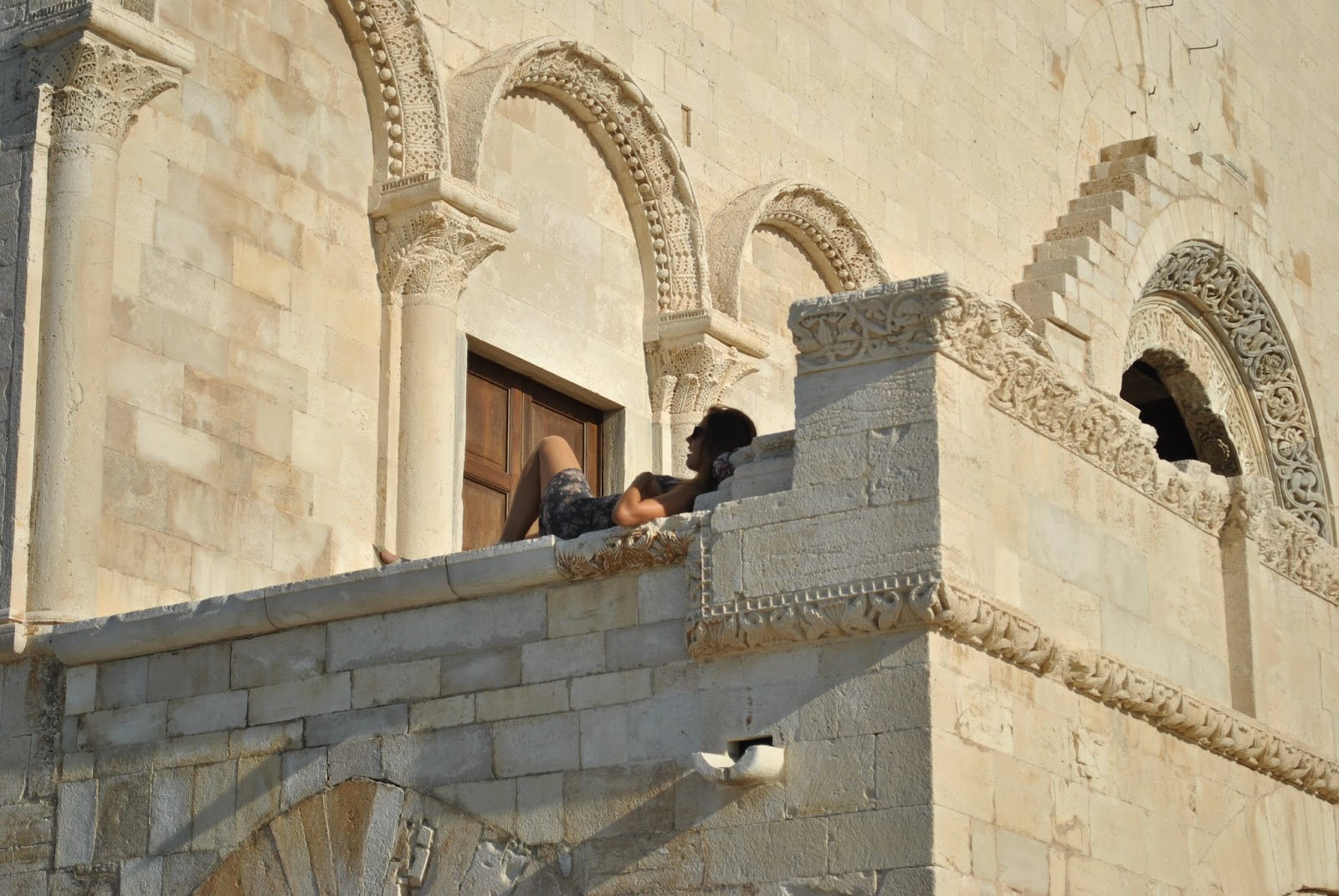I have arranged an appointment at 10 with Anna, public relator of Consorzio Produttori vini di Manduria.
I have learned
the Consorzio through Alceo, a magazine of enological culture edited by
the Consorzio itself.
My girIfriend Lucia and I leave Brindisi at 8 o’clock, heading to Manduria.
My plan is
to visit firstly the immense archaeological park of Manduria, of which I’ll
talk about in one of the next posts.
I am
excited at the idea of visiting the Consorzio,
which has been founded in 1932.
The Consorzio is a team of Primitivo wine makers.
Primitivo
di Manduria wine is a DOC
(quality assurance label).
The Illyrians
came from the Balkans. They colonized the entire Apulia.
Those who
settled down in Salento (south of Apulia) were given the name of Messapians by
the Greeks.
Therefore, Manduria hosted one of the largest Messapian community.
Therefore, Manduria hosted one of the largest Messapian community.
We arrive at the Consorzio at 11 o’clock.
We are enchanted by seeing how beautiful and elegant is this place.
Anna is temporarily busy with some Swedish tourists.
“would you like to taste some of our wines?” she asks.
“Yes, please” we reply pleasantly surprised.
Monica let
us taste the Memoria wine.
Then, she pours in our glasses the Amoroso (rosé).
After that we drink a glass of Madrigale. Finally one of Sonetto.
Then, she pours in our glasses the Amoroso (rosé).
After that we drink a glass of Madrigale. Finally one of Sonetto.
At this stage, I have to admit that I feel merry. The Primitivo wine is between 14% and 15%. I should not forget it.
I’m happy to be here.
The magic
of conviviality has infected us.
I start talking with Antonietta, a lady who comes form Milan.
She is so
fond of Apulia that she has bought a property in Ostuni. “what I love of Apulia
is its colors.
Moreover, it is plenty of olive trees around here. They grow in a soil which looks to me a carpet.”
Then, we
talk with some tourists who come from Torre Annunziata (Naples).
A French lady is with them.
She speaks an excellent Italian.
“I have had the disgrace of marrying an Italian from Torre Annunziata” she says smiling.
I have the
strong feeling that Anna and her colleagues are just a great team.
Actually, they don’t just sale wine.
Their aim is higher, much higher. Anna leads people to a journey through the culture of the Primitivo wine.
Actually, they don’t just sale wine.
Their aim is higher, much higher. Anna leads people to a journey through the culture of the Primitivo wine.
“The tragic events of 1986 have given a great lesson to our country. Nowadays, Italian wine makers fully guarantee the consumers in terms of quality. “ Says Anna.
Anna is a
great public relator. She would be able to make anyone at ease.
We are
reaching the end of the Primitivo wine tour.
Frankly, I have
had great time here. I tasted excellent wines. I met very nice people, with
whom I even exchanged mobile number and e-mail address.
I strongly
recommend you to come to Manduria.
You definitely
won’t be disappointed.
Salute
If you wish to see more pics, please click here

_-_Project_Gutenberg_eText_12369.png)










.jpg)

.jpg)








































